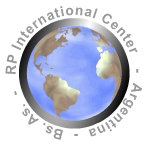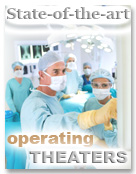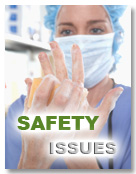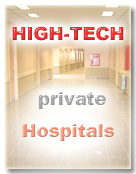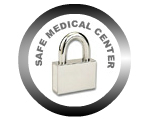
- RP Specialized in:
- Plastic Surgery in Argentina
- Treatments
- Breast Implant Surgery
- Rhinoplasty
- Vaser® Lipo System
- Liposuction
- Eyelid Surgery
- Tummy Tuck
- Breast Lift
- Facelift
- Lifting the Tip of the Nose
- Breast Reduction
- Double Chin Surgery
- Eye Shaping Surgery
- Chin Augmentation
- Ear Surgery
- Mentoplasty
- Eyebrow Lift
- Mini Facelift
- Cantopexy
- Deep Chemical Peel - Resurfacing
- Plastic Surgery Information
- Plastic Surgery Costs
- Cosmetic Procedures
- Hair Transplant
- Dermatology
- Phlebology
- Related information
- Related Links
- Web Directories
- Free Quotation
- Webmaster
» Facelift, ritidectomy - Plastic surgery in Argentina
Table of Contents:
- » Pictures Before and After
- » General Information: risks, anesthesia, recovery, pre-operative tests, etc.
- » How to get a quote - Photographs necessary - Requirements.
» Privilege good results over cost savings. Go for quality.
» General Information: risks, anesthesia, recovery, pre-operative tests:
What is a Facelift?

"Facial skin stretching", "Rhytidectomy", "Facelift" o "Lifting" are general terms for diverse procedures aimed at lifting and tightening facial skin to reduce creases or wrinkles and make you look younger.
Normally, lifting is performed on the neck, chin, cheeks and periocular and temporal areas. Sometimes the forehead and eyebrows are included in this procedure, or may be treated separately. This surgery may be done in conjunction with other procedures such as blepharoplasty or eyelid surgery, which goal is to give you a fresher look.
What is facelift like?
Face stretching is done by incisions that generally begin above the hairline at the temples, extend in a natural line towards the front of the ear (or just inside the cartilage to the front of the ear) and continue behind the earlobe to the lower sculp. If the neck is included, a small incision may also be made under the chin to stretch the skin and remove the double chin. The fat may be cut or suctioned out in the neck area (double chin) or the chin to improve the contour. After the surgery, drainage will be placed, and will be removed one or two days later. Most of the scars will remain hidden inside the hairline and inside the natural creases of the skin.
One of the requirements to be eligible for a facelift is to quit smoking 1 or 2 months before the surgery, because smokers present increased risks of a delayed healing of scars. Smoking inhibits blood flow to the skin, which may interfere with the areas where incisions were made, thus producing small holes in the skin (ulcers).
Are there any risks? Which complications may arise?
All surgeries involve Risks:
By giving you all the information you need to make a decision, including information on the risks involved, we show our respect for you and allow you to have the last say in all matters concerning your surgery. We also believe that this speaks volumes about RP Medical Center, about who we are and how we work. It is our responsibility to provide you with all necessary information. We consider that Quality goes hand-in-hand with Responsibility. All patients have a right to be explained how the surgical procedure will be performed, together with the potential risks and complications (which are not caused by a Physician’s errors or malpractice, but which derive from the surgery itself or cannot be anticipated), and the advantages and disadvantages of certain techniques, so that they can think it over and make a balance before making any final decision.
Any surgical procedure has risks (whether an optional surgery, which you choose to undergo, or an emergency surgery); some risks are common to all surgical procedures and others are specific to each type of surgery. No surgery is exempt from risk. A plastic surgery is, after all, a surgery. Risks (each under different incidence percentages; see below) range from post-surgery complications which can be secondarily solved (bad scarring, seroma, skin necrosis, etc.) to severe and fatal complications such as reactions to anesthesia, pulmonary embolism (blood clots or "small blood balls" which could migrate to the heart and block the pulmonary artery causing severe injuries or even death), among others.
In 1997, the results of a survey were disclosed in the United States, based on 400,675 surgical procedures involving Plastic Surgery and Surgical Repair, where 7 deaths were found. The rate of severe complications (hypotension, hematoma, infection, hypertension episodes, sepsis) was 0.47% (1 case every 230 patients). One death occurred every 57,000 patients, that is, a mortality rate of 0.0017%; slightly less than 1 death every 57,000 patients. The survey documented the approximate safety level for plastic surgeries conducted by certified plastic surgeons in authorized facilities in the US, during those years. Another survey conducted in the United States (from 1994 through 1998) further accounted for deaths occurred after Liposuctions. Survey findings reported one death every 5,000 patients, which represents a mortality rate of 0.02 % and 20 deaths every 100,000 liposuctions. The main cause of death was pulmonary thromboembolism.
Risks must be minimized by taking all appropriate preventive measures and complying with certain rules and requirements, including the requirement for pre-surgery tests, pre-operative and post-operative indications, the practice of surgeries in the proper facilities (which must be fully-equipped to cope with any inconveniences), patients’ full medical history, and their compliance with the Physicians’ guidelines after the surgery. It should be recalled that complications and risks may arise even where all precautions were taken and even if the patient is healthy. Given that these complications are not predictable, they may affect the patients of even the best surgeons in any country of the world, despite any precautions taken to reduce potential risks.
One of the requirements to be eligible for a facelift is to quit smoking 1 or 2 months before the surgery, because smokers present increased risks of a delayed healing of scars. Smoking inhibits blood flow to the skin, which may interfere with the areas where incisions were made, thus producing small holes in the skin (ulcers).
What type of anesthesia we use?
Local anesthesia combined with a sedative or General Anesthesia is used to relax the patient. Your face will be insensitive to pain.
At what age can I have a facelift and who are ideal candidates?
Basically, a facelift can be performed when your face tissue needs it. Currently, these procedures are recommended for people aged 35 or above, or earlier under certain circumstances. The best candidate for a facelift are those persons whose face and neck have begun to sag, but whose skin still has some elasticity and whose bone structure is strong and well-defined. Most patients are in their forties to sixties, but facelifts can be done successfully on people in their seventies or eighties as well.
What are the expected results and how long do they last?
Facelift procedures can not only make you look much younger, but also leave your apparent age quite behind in relation to your chronological age. The skin on your face is tightened and lifted and shows a firm appearance; wrinkles and creases disappear. You will look younger. The effects of a facelift are quite lasting, given that after several years you will still have a better look than the one you would have if you had not undergone surgery. Anyway, your face will continue to age throughout the years, and when wrinkles and creases appear again, a new surgery can be performed.
What precautions should I take after surgery? When can I go back to normal life?
After care
Bandages, when used, are usually removed after one to five days. Drainage tubes are removed one or two days after the surgery. Your face is expected to have a pale, puffy or bruised appearance, but you will be looking normal again in a few weeks. You should rest during the first 48 hours in a half-sitting position. After one or two days, you will be able to walk and, during the first week, you will be able to do only light chores. Get plenty of rest, especially during the first week, and allow your body to spend its energy on healing. You should wear sunglasses, a cap or a scarf if you go out. Avoid sun exposure for several months. You can use special makeup to conceal the bruises if they bother you too much. By the third week, you will look and feel much better. In most cases, suture is removed between the 5th and 7th day following surgery. Any remaining stitches will be removed on the 10th day.
If I do not live in the City of Buenos Aires: How long should I stay approximately?
You will need to stay in Buenos Aires for 10 nights and 11 days. If you agree to have the sutures removed by a trusted physician in your city of residence, the total stay will be of about 9 days, as long as you recover normally during the post-operative period.
Which are the required pre-surgical tests?
It is necessary to undergo the following pre-surgical tests within 1 month before the date of surgery:
- I. Blood test: hemogram, blood sugar, creatinin, hepatogram, clotting time, serology HIV.
- II. Cardiology: ECG and surgical risk.
Mandatory pre-surgical instructions:
- Put off smoking 1 or 2 months in advance (all smoking patients have an increased risk of skin suffering in the area being operated on and of a delayed healing of scars).
- Discontinue Aspirin intake (Acetyl salicylic acid) 1 month in advance.
- Discontinue Vitamin E intake 1 month in advance.
- Apply anti tetanus vaccine.
- Anticoagulated Patients: Consult your hematologist to change treatment schedule.
» How to get a quote - Photographs necessary to undergo a surgery - Stay - Requirements:
» To request the right quote and provide all necessary information, go to: "How to travel to undergo a surgery", and read "Step No. 1", "Make arrangements for a surgery by following these easy steps".
» Photographs required for Facelift: Please send 5 pictures of your face: 1 frontal photograph, 1 profile photograph of each side and 1 3/4 profile photograph of each side. It is important that pictures show the head and neck completely.
» Days of stay for Facelift: 10 nights, 11 days. For further information on stay days, minimum stay, and schedule, among other matters, go to "How to travel to undergo a surgery" , read "Step No. 3", " Make arrangements for a surgery by following these easy steps."
» Hospitalization: 1-day hospitalization at the clinic is required.
» Requirements: Put off smoking 1 or 2 months in advance, since smokers have an increased risk of a delayed healing of scars. Smoking inhibits blood flow to the skin, which may interfere with the healing of incision areas, thus producing small holes in the skin (ulcers).
» Why are photographs necessary?
Not only are photographs necessary to avoid paying for an unnecessary and more expensive surgical procedure, but also to determine whether the surgery for which you have come to us is the best type of surgery for you. Photographs are essential for our Physicians to analyze your case, to know how to proceed and offer you the personalized treatment that sets us apart. Your photographs also enable us to make a more precise quote.

